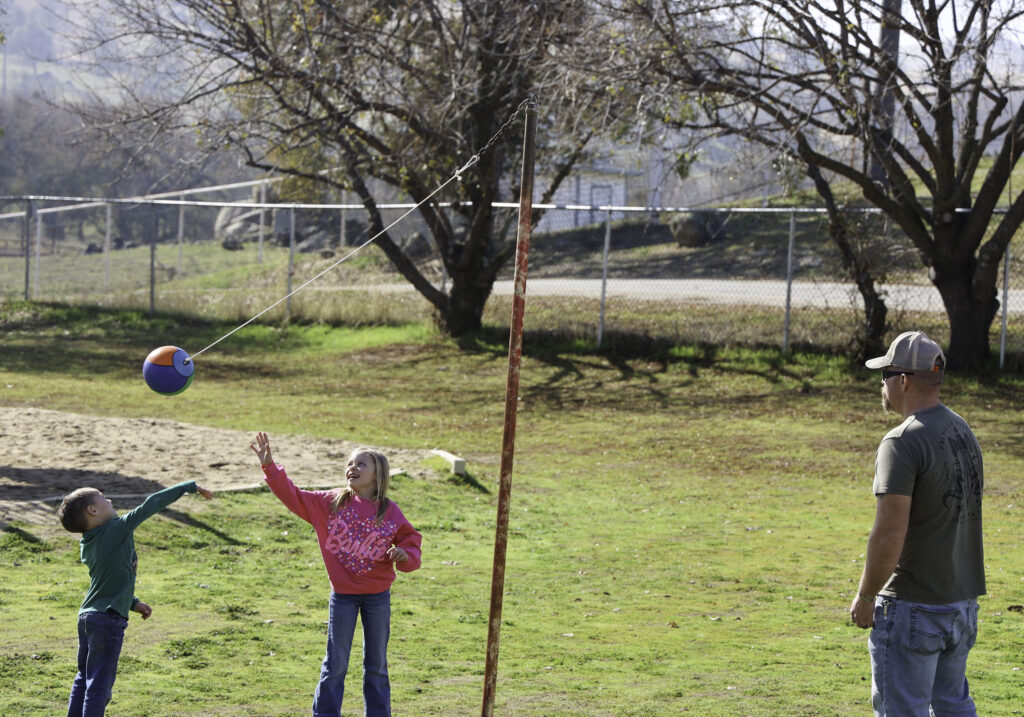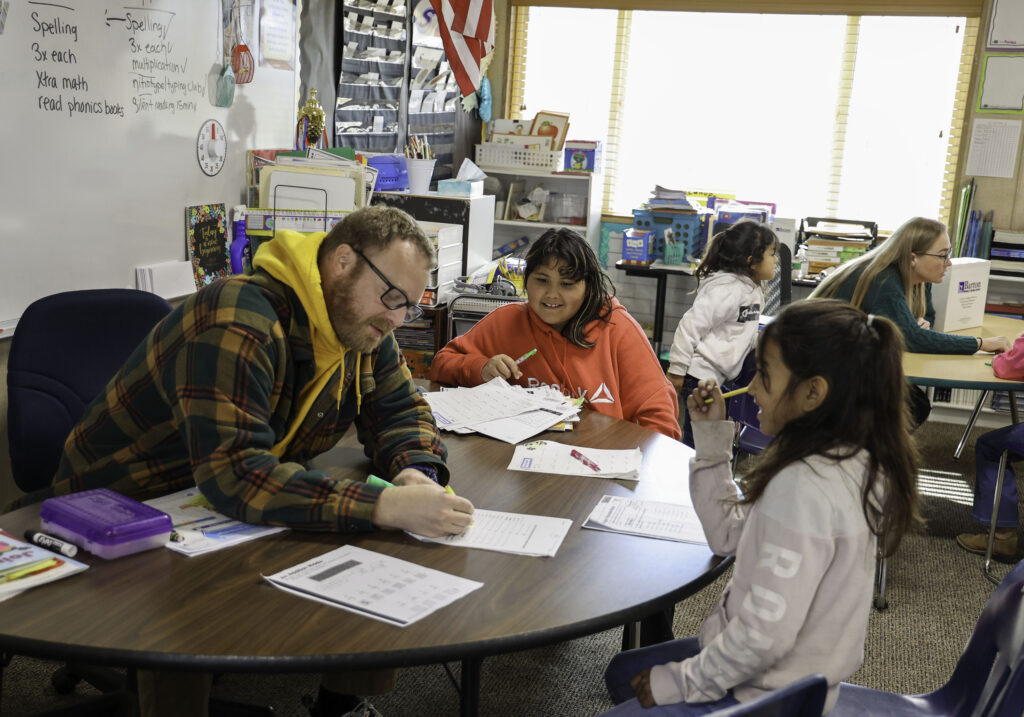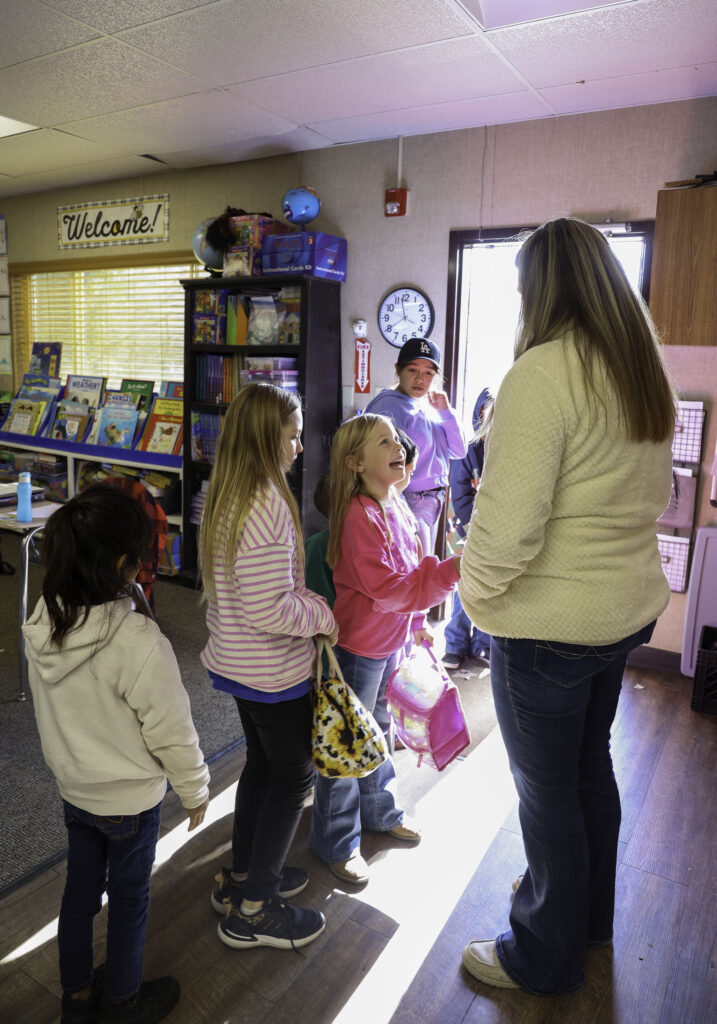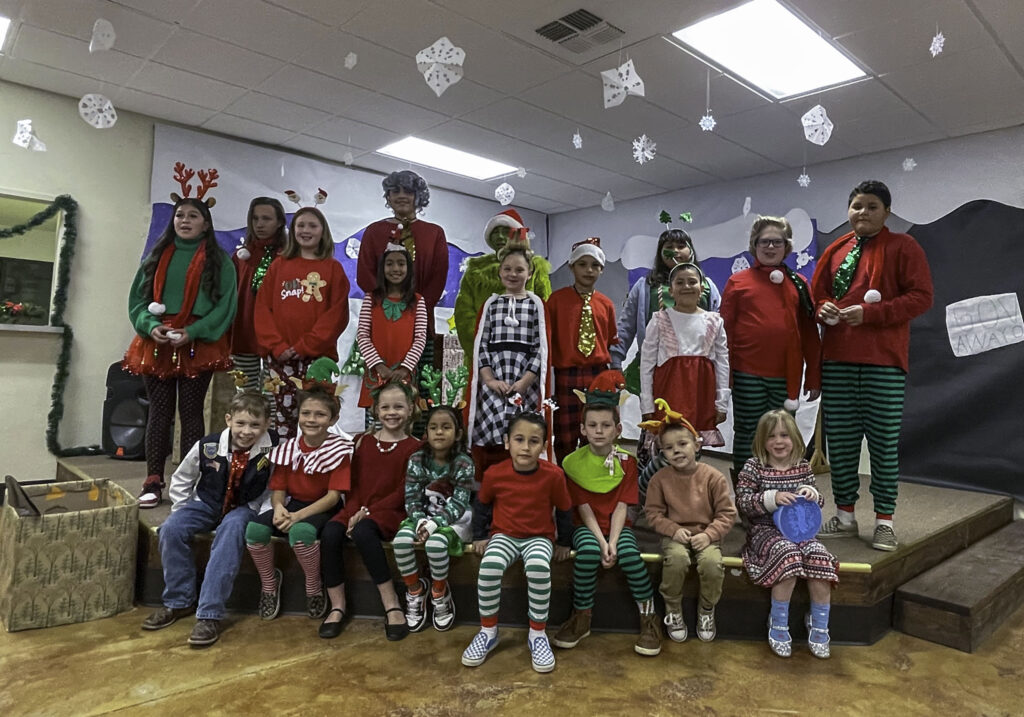Blake School District: The One-Room Schoolhouse With a Lot of Heart
Blake School District is a far cry from your typical Kern County school system. The single-school district is the perfect embodiment of a classic one-room schoolhouse with just 21 students ranging from kindergarten through eighth grade. Blake School is just a few miles away from Glennville in the tiny community of Woody. It’s the smallest school and school district in Kern County and among the smallest in the state.
The only full-time educator is Timari Duty, who serves as the teacher, principal, and district superintendent. She says the experience at Blake is very different from other, larger schools.
“I get to work with every single kid every day on the level that they’re learning,” she said. “I’m not just teaching to the majority, I get to teach to everyone and reach everyone’s needs.”

Teacher/Principal/Superintendent Timari Duty teaching math.
Several educators have served as teacher/principal in the Blake district in the past few decades. The position is often difficult to fill, since the educator has to live or travel to the remote area, and must teach all grade levels as well as handle administrative tasks.
“Even though teaching one grade was easier, I feel like this is much more rewarding,” Duty said. “You’re going from one thing to the next constantly. Your brain is in a million different places at once.”
A look back
According to records maintained by the Kern County Superintendent of Schools (KCSOS), the township of Weringdale (named for its founder Joseph Weringer) was established around 1891 after commercial deposits of copper were discovered nearby, and workers and their families moved to the area. It town later became Woody. Blake School was opened in 1899 to provide education for the small number of mining families who lived and worked there.
The new district, carved out of territory that the Woody and Joiner school districts had previously held, was named for a local miner, Frank Blake. Blake had been holding classes in his cabin and would continue to do so until the schoolhouse was built and ready for occupancy. The first Blake School was located some two miles west of the Woody townsite, a location chosen because it was closest to the greatest number of students. That original building was moved to its present location in 1917.
Today, the 117 square miles of territory encompassing the school district boundaries is home to several cattle ranches. Woody is sparsely populated, and enrollment in the district has always been small. Over the years, enrollment has fluctuated, with some years seeing as few as nine students. Because of this, the district was often in jeopardy of lapsing.
Records indicate that the district was suspended in August 1921 and again in August 1944 because of low enrollment. However, in each instance, it was re-established before the beginning of the school year. There was a threat of suspension in 1929 when it appeared that only four students would be enrolled, not enough for state funding, but the district was saved when the board hired a teacher on the condition that she bring her younger brother and sister with her from the bay area and enroll them in school, which she did. To this day, strong community support has managed to keep the doors open.


A community with a lot of heart
Duty says it’s truly a community where everyone helps out. This was especially apparent during the COVID-19 pandemic when students had to learn from home.
“All of the parents are really supportive and helpful. They were able to step up and make sure the kids were meeting their goals,” she said. “There wasn’t a lot of learning loss.”
Duty says the sense of community extends to the students as well. Kids in the older grade levels are often counted on to help out the younger students, which teaches them independence and responsibility.
“The big kids are really supportive of the littles and helping them learn all of the things,” she said. “You’re just like one big happy family.”
Teacher’s aide Dustie Burkhart agrees and says the students get to experience all different age groups. “Where else would you see middle schoolers playing with elementary students?”


Dustie Burkhart (left) and Zach Akers (right).
Burkhart teaches part time and also runs the after-school program. The students play sports, do STEM activities, create artwork and more.
Duty says since most students live on cattle ranches, there’s a lot of interest in the 4H and Future Farmers of America programs.
“Most of these kids are very hands-on, especially the ranching community kids,” she said.
Callahan Duty is a seventh grader and Timari’s son. He says he would rather be at Blake than a larger school.
“It’s nice because you have the same teachers every year,” he said.
Callahan says he likes learning fire science, math and history, and is interested in becoming a wildland firefighter like the Glennville Hotshots.


Once students graduate eighth grade at Blake, they transfer to North High School in Oildale, about 30 miles away. Duty says there’s often a culture shock when students join such a large school.
“I do feel like these kiddos are sheltered,” she said. “They don’t see a lot of the things that a typical middle schooler would see.”
Zach Akers is a part-time paraprofessional who started with Blake in September 2021. He says it’s a balancing act to juggle so many different age groups at once.
“The issues that come up with kindergarteners are going to be different than the things that come up with eighth graders,” he said.
He says the tactics used to resolve those issues are also different depending on what grade he’s working with.


Expanded Learning Opportunities Grants, which are granted by the state to provide supplemental instruction and support to students, have been a major benefit to the school in recent years. With the funding, the school has been able to purchase STEAM activity packs, expand after-school programs, hire music and art teachers to provide occasional lessons and more. Duty also worked with KCSOS to purchase a van that they can use to take the students on field trips, an activity she hopes to expand upon.
“I want to do things like taking the fourth graders to see the missions,” she said. “Taking them to see some plays would be awesome.”
Akers said field trips are one of his favorite things to do with the students. He says kids get excited about the opportunity to travel outside of their small town and expand their horizons.
“I just feel like I’m lucky to be here,” Akers said. “You really get to understand the kids and you really get to know them.”





By Katie Avery
Katie Avery joined the Kern County Superintendent of Schools in 2023 as a Communications Specialist. As a former journalist and marketing professional, her passions include media and storytelling. Before joining KCSOS, Avery worked for various local TV stations as well as the health care industry.
